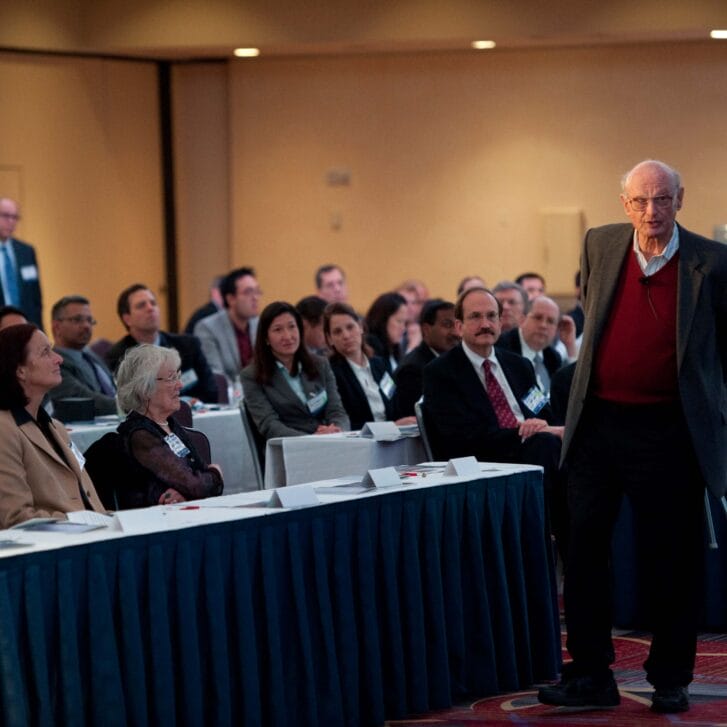What has your startup done lately? Did it disrupt the status quo? Did it change the game of the industry in which it competes? Did it crush a recent pitch for additional funding? Equipped with a Wharton degree, your leadership probably propelled all of these things to happen.
The passion-rich approaches many entrepreneurs have pursued when building their products, though, have not carried over to an equally important component of their businesses: their people. Take away the beer-stocked refrigerators, video game setups and pingpong tables, and inside these organizations you’ll uncover people-focused policies and practices lifted straight from the corporations that many entrepreneurs hoped their startups never would resemble. Biannual performance reviews. Stack rankings of peers. Inadequate new manager training. They know better.
Entrepreneurs must employ the same innovative mindsets used to craft their products to reimagine the employment experience for tomorrow’s worker. By doing so, they can accelerate their organization’s growth and make their firm a destination among high-potential talent.
Look to four Penn researchers for inspiration.
1. Grits, Please: One of the most important selections an entrepreneur makes is who she wishes to bring onto her team. Many have followed Google’s lead in removing GPA and test score data as employment application requirements, for there exists little to no correlation between such criteria and job performance. Others have reconsidered the job descriptions they post for prospective applicants because the roles are increasingly “FIO jobs” for which candidates simply need to be prepared to “figure it out.”
Research by Penn psychology professor Angela Duckworth, however, suggests that forward-thinking entrepreneurs should complement their interest in collecting and analyzing productfocused data points with applicant assessment data, such as results from her 12-item grit scale. Such a test offers valuable insight into which applicants will get going when the going gets tough, a critical trait in the high-demand startup community.
2. Craft With Care: Much has been written about the user experience entrepreneurs design for their customers through products, online platforms and flagship stores. They infrequently demonstrate the same artful craftsmanship, though, when designing their employees’ roles and responsibilities. And with many competing priorities, employees may also be hesitant to start such a dialogue with their managers.
To combat this phenomenon, Wharton doctoral student Justin Berg and his colleagues created a process called the Job Crafting Exercise (JCE).The JCE begins with managers clearly stating the outcomes they expect the employee’s job to produce. Using colored cards, employees list their current job’s tasks, as well as their own strengths, passions and motives. Each task is then considered a commodity that can be traded to another teammate, enabling employees to select responsibilities that are more congruent with their strengths, passions and motives. The startup earns engagement and commitment while still pursuing its goals.
3. Prioritize Culture: In a 2013 HBR blog post, Jessica Lawrence, executive director of NY Tech Meetup, cited an estimate that one-third of startup entrepreneurs fail to consider cultivating their firm’s culture. Companies’ cultures—their norms and values—go beyond casual dress, open floor plans and Friday afternoon happy hours. Culture informs the way work gets done.
Adam Grant’s book Give and Take offers a core tenet around which your company’s culture should be built: giving. Grant, the Wharton Professor of Management and the Class of 1965 Chair, and his colleagues show how cultures of helpfulness produce valuable outcomes that bolster organizational effectiveness. What entrepreneur wouldn’t want to foster a culture that helps employees get work done faster, boosts team cohesion and prioritizes client needs?
To develop a “giver culture,” startup founders and leaders should promote help-seeking behaviors and recognize givers. To encourage giving, look to an exercise called the “reciprocity ring,” developed by Wayne and Cheryl Baker of Humax Networks. The activity asks each employee to make a personal or professional request of 10 to 12 others. Group members are tasked with helping one another however they can. Further, to reward givers, consider implementing a platform where employees can post about how a colleague went above and beyond for them. Make the system visible to everyone. Think of it like a transparent, digital tip jar. Alternatively, pay bonuses based on cooperative—instead of competitive—outcomes.
4. Develop Leaders: The leaders of tomorrow bring their whole selves to work, having moved away from the enshrined and elusive “balance” so many seek.
Enter Stew Friedman, Wharton’s Practice Professor of Management and author of Total Leadership (with a sequel due in fall 2014). Friedman encourages work-life integration and trains leaders to take steps that meaningfully impact their experience at work, at home, in the community and with their private selves. Such steps result in “four-way wins.”
To instill Total Leadership’s lessons into your company’s conversations with the most important people in their lives, as well as creative experiments. “Stakeholder dialogues” require that employees connect with the individuals most central to their work, home and community existences. Uncovering each side’s expectations of the other, as well as their respective performance against those expectations, allows participants to view their life as a malleable system.
This flexibility offers employees the chance to experiment with new ways to secure four-way wins. Experiments may involve changing the time when or space where work gets done, committing to a healthier lifestyle and/or volunteering in your community.
By more purposefully selecting gritty new talent; teaming with employees to craft jobs that generate both company results and personal fulfillment; building a giving culture; and broadening your company’s leadership development  offering outside of the office, entrepreneurs can bolster their companies’ performance as well as attract and retain the best talent. After doing so, you just might be ready for a game of pingpong.
offering outside of the office, entrepreneurs can bolster their companies’ performance as well as attract and retain the best talent. After doing so, you just might be ready for a game of pingpong.
Andrew Stern, W’10, works on the Leadership, Learning & Organizational Development team at Bloomberg LP in New York. He’d love to hear from you on LinkedIn.

























